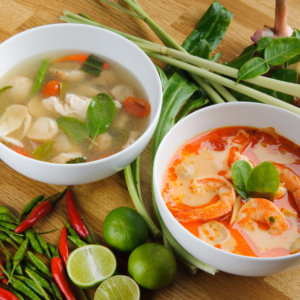Fruits are good for your health, but if you eat them without cleaning them properly, you may be setting yourself up for food poisoning. Washing fruits is an essential step in maintaining food safety and hygiene. For most people, washing fruits is not a matter of “if” but of “how.” This article will guide you through the most ideal ways to wash your fruits.
What to not wash your fruits with
Before we go into details of the ideal ways to wash fruit, here is how not to wash your fruits. There is one commonly used method that is potentially dangerous.
If you wash your fruit with soap, there is a likelihood that you’re putting yourself in more danger than you think. You may be better off eating the fruit straight off the market shelf. Okay, that’s a stretch but you get the point.
The problem with washing fruits with soap is that even after thorough rinsing, a residue can penetrate the fruit. This could lead to gastrointestinal problems like vomiting and diarrhea, and of course, soapy food is not enjoyable.

What to wash your fruits with
Now, we’re left with the question “How should fruits be washed?”
Wash fruits with water
As surprising as it may seem, washing your fruits under running water alone is sufficient. Rub the fruit gently as water runs over it to make it more effective. For firmer or harder fruits like pineapple, you can use a clean scrub brush to scour the surface, still under running water.

Wash fruits with salt
This method may not always help eliminate germs from the surface of your fruit; however, it is a proven way of removing residual pesticides and camouflaged insects from your fruit.
Mix your salt with water in a ratio of 1 to 9. Place your fruits in the water and leave them to soak for about twenty to thirty minutes before rinsing again in water.

Wash fruits with vinegar
This option is a better bet if you feel safer washing your fruits with soap. Vinegar–white vinegar–is safe for consumption and just like soap, it has antimicrobial properties.
Make a solution of 1 part vinegar and 4 parts water and soak your fruits in it for about 10 minutes. Doing this will make your fruits safe enough to eat.

Wash fruits with baking soda
Baking soda is the ultimate cleanser for kitchen use. Not only does it effectively wash plates and pots, but baking soda also makes fruits clean enough to eat. Some research shows that this method may be the most effective way of washing fruits.
Leave the fruits in a baking soda and water bowl for about 15 minutes. Then, rinse them thoroughly with warm water.

Wash with fruit wash
Manufacturers have developed a fruit wash to calm the worries of people who feel salt water or vinegar is not effective in washing fruits. However, it is a more expensive option.
These products wash off pesticides, kill microbes on the fruit, and keep it fresh for longer periods by preventing spoilage and mold growth.
Rebel Green Fruit and Veggie Wash is Amazon’s overall pick. This product does not leave an after taste. Ensure to follow the manufacturer’s instructions on using the product.

Summary
It’s important to wash your fruits correctly to avoid foodborne illnesses. Never wash your fruits with soap, as it can leave harmful residues. Instead, opt for one of the effective and safe methods like washing with water, salt, vinegar, baking soda, or a fruit-wash product. By following these guidelines, you can enjoy eating clean and safe fruits. Proper storage afterward keeps your fruits safe for consumption long after washing. You can also apply these methods to washing vegetables and herbs.











